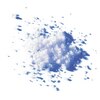CP45 Sigma-AldrichAnti-Clathrin Heavy Chain Mouse mAb (X22)
This Anti-Clathrin Heavy Chain Mouse mAb (X22) is validated for use in Immunoblotting, Immunofluorescence, Immunoprecipitation for the detection of Clathrin Heavy Chain.
More>> This Anti-Clathrin Heavy Chain Mouse mAb (X22) is validated for use in Immunoblotting, Immunofluorescence, Immunoprecipitation for the detection of Clathrin Heavy Chain. Less<<Recommended Products
Overview
| Replacement Information |
|---|
Key Spec Table
| Species Reactivity | Host | Antibody Type |
|---|---|---|
| B, H, M, R | M | Monoclonal Antibody |
Products
| Catalogue Number | Packaging | Qty/Pack | |
|---|---|---|---|
| CP45-100UL | Plastic ampoule | 100 ul |
| Description | |
|---|---|
| Overview | Recognizes the ~180 kDa clathrin heavy chain protein. |
| Catalogue Number | CP45 |
| Brand Family | Calbiochem® |
| Product Information | |
|---|---|
| Form | Liquid |
| Formulation | In PBS. |
| Preservative | ≤0.1% sodium azide |
| Quality Level | MQ100 |
| Physicochemical Information |
|---|
| Dimensions |
|---|
| Materials Information |
|---|
| Toxicological Information |
|---|
| Safety Information according to GHS |
|---|
| Safety Information |
|---|
| Product Usage Statements |
|---|
| Packaging Information |
|---|
| Transport Information |
|---|
| Supplemental Information |
|---|
| Specifications |
|---|
| Global Trade Item Number | |
|---|---|
| Catalogue Number | GTIN |
| CP45-100UL | 04055977220995 |
Documentation
Anti-Clathrin Heavy Chain Mouse mAb (X22) SDS
| Title |
|---|
Anti-Clathrin Heavy Chain Mouse mAb (X22) Certificates of Analysis
| Title | Lot Number |
|---|---|
| CP45 |
References
| Reference overview |
|---|
| Bauerfeind, R., et al. 1996. J. Neurocytol. 25, 701. Zhang, J.Z., et al. 1994. Cell 78, 751. Herskovits, J.S., et al. 1993. J. Cell Biol. 122, 565. Van Der Bliek, A.M., et al. 1993. J. Cell Biol. 122, 553. Pearse, B.M. and Robinson, M.S. 1990. Ann. Rev. Cell Biol. 6, 151. Brodsky, F.M. 1985. J. Cell Biol. 101, 2047. |















